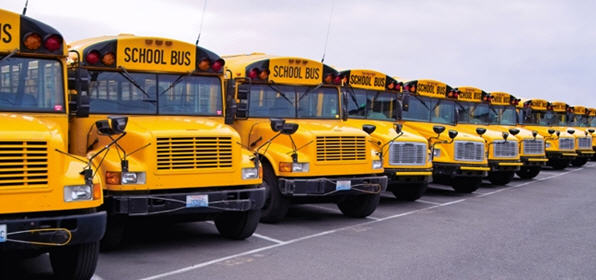According to the American School Bus Council, 26 million students ride a school bus each year. Considering even students with a relatively short, 20-minute commute can spend hundreds of hours on the school bus over the course of the school year. When you add it all up, it is estimated that U.S. students spend a staggering 520 million school days on buses each year.
What if a student could use that travel time to work productively on school assignments?
WIFI ON SCHOOL BUSES
One solution is to ensure that your school buses are WiFi enabled so students have access to the Internet to work on class assignments to and from school. WiFi provides connectivity for students with enabled tablets, laptops, and other devices to use their commuting time more productively. In addition to daily commuting, WiFi on school buses can provide an opportunity for student athletes traveling to and from away games or students on field trips to take advantage of travel time and extend learning beyond the classroom.
Of course, this connectivity must be CIPA- Compliant and safe to ensure students can not access inappropriate content – and – should only allow access to education-related sites to productively complete school assignments. District-paid connectivity on school buses should not be used for entertaining students. Entertainment sites consume a lot of bandwidth, which will unnecessarily drive up costs, resulting in schools and districts paying hundred and thousands in taxpayer dollars.
UNFILTERED WIFI
Without filters, field deployments have shown that students will burn through gigabytes of data using the connectivity for non-educational purposes, such as:
- Streaming music & entertainment
- Updating apps
- Watching movies, and
- Socializing with friends on Snapchat, Facebook, Instagram, etc.
With unfiltered WiFi, individual school buses will consume between 10-20 GBs of data per month which can be a very expensive proposition when you roll out WiFi to the entire fleet.
FILTERED CONNECTIVITY
Many times administrators hesitate to tighten filters because they want to ensure students can get to all the content they need. While some of the social media and streaming sites may have some educational value, for the most part they distract kids from the actual task at hand: schoolwork. That’s not the intent for district-issued mobile devices.
By looking at the data and usage reports over a two- to three-week period, districts can adjust the filter settings to gain insight and grasp a better control over bring non-educational data better under control, all while directing students to educational sites only. Data usage reports allow administrators to have insight into which days of the week and which bus routes consume the most data, as well as which sites are being accessed and/or denied.
Now your students can safely study, learn, and collaborate on class assignments while on the bus. With Kajeet Education Broadband™ service, each bus can have 4G LTE connectivity pre-configured with safe CIPA-compliant/education-content filters to keep students focused on schoolwork and not on distractions.
With Kajeet SmartBus™, districts can purchase data in bulk from their choice of the two leading 4G LTE wireless broadband networks in the nation. The data pool is placed in the account and available for use across all buses. Data does not expire and rolls forward each month. Additional data can be added to the account at any time. Included with the plan is the Cradlepoint® IBR1100 cellular router, antenna, as well as the CIPA-compliant filtering, time-of-day controls, URL allow/deny controls, and access to reports and analytics.







.png)
